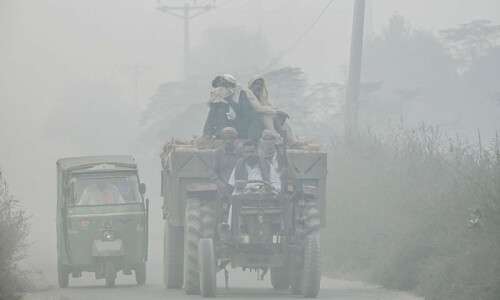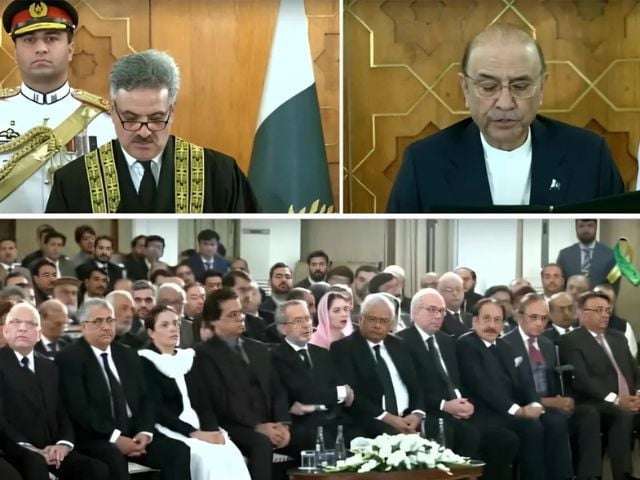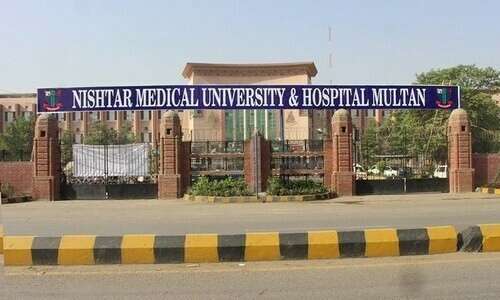The Punjab government has taken decisive action to address the severe smog crisis affecting the province by ordering the closure of all educational institutions from November 7 to 17. This move comes as the region grapples with a dangerous Air Quality Index (AQI) and escalating health concerns.
Smog Declared a Calamity
On Thursday, the Punjab government officially declared smog a calamity, triggering a series of emergency measures aimed at improving air quality. These measures include:
- Vacations for Disabled Children: Special provisions have been made to protect disabled children by giving them extended vacations.
- Ban on Activities Leading to Smog Formation: A comprehensive ban has been imposed on activities contributing to smog, in an effort to mitigate pollution levels.
Green Lockdown in Lahore
A day before these measures, the provincial government had imposed a green lockdown in several areas of Lahore identified as “smog hotspots.” However, enforcement on the first day was reportedly lax. The Provincial Disaster Management Authority (PDMA) has now declared smog a calamity under Section 3 of the Punjab National Calamities (Prevention and Relief) Act, 1958. This act empowers the government to maintain and restore order in areas affected by calamities and to prevent, control, and provide relief for such events.
Hazardous AQI Levels
On Tuesday, Lahore’s residents experienced the brunt of hazardous air quality, with the AQI soaring to 609, making it the most polluted city globally at that time. The situation has prompted urgent governmental action.
School Closures and Shift to Online Education
A notification issued by the Punjab government on Wednesday mandates that all educational institutions, including private tuition centres up to Higher Secondary Level (12th grade/A-level), will remain closed and transition to online learning during this period. The districts affected by this decision include:
- Lahore
- Sheikhpura
- Kasur
- Nankana Sahib
- Gujranwala
- Gujrat
- Hafizabad
- Mandi Bahauddin
- Sialkot
- Narowal
- Faisalabad
- Chiniot
- Jhang
- Toba Tek Singh
- Multan
- Lodhran
- Vehari
- Khanewal
The notification underscores the government’s efforts to control intrinsic factors contributing to air pollution and to improve ambient air quality.
Face Mask Advisory to the Public
In addition to educational institution closures, the Punjab government has issued an advisory for the public to wear face masks in open public spaces in Lahore, Gujranwala, Faisalabad, and Multan divisions until January 31, 2025. This measure aims to protect public health amidst the recent spike in respiratory diseases attributed to smoke and dust.
The notification highlights the pressing need for safety measures to prevent morbidity and disease caused by the deteriorating air quality.
Frequently Asked Questions (FAQs)
1. Why has the Punjab government ordered school closures?
The school closures have been ordered to protect students and staff from the hazardous air quality caused by severe smog in the region.
2. What areas are affected by the school closures?
The closures affect educational institutions in several districts, including Lahore, Sheikhpura, Kasur, Nankana Sahib, and others listed above.
3. How long will the school closures last?
The closures are in effect from November 7 to 17.
4. What measures is the government taking to improve air quality?
The government has declared smog a calamity, banned activities contributing to smog formation, and imposed a green lockdown in smog hotspots.
5. Why has the government advised the public to wear face masks?
The face mask advisory aims to protect the public from respiratory diseases caused by the high levels of smoke and dust in the air.
Conclusion
The Punjab government’s swift and comprehensive response to the smog crisis underscores the severity of the situation. By closing schools, shifting to online education, and implementing various emergency measures, the authorities aim to safeguard public health and improve air quality. Residents are advised to follow government directives and take necessary precautions to mitigate the adverse effects of the smog.
ALSO READ:



